There are a myriad of ways to continue to care for your vinyl liner that could ultimately extend its life and retain the benefits included with a lined pool. If you are a brand new pool owner or just considering a vinyl liner pool then this is a must read!
How Often Should You Replace Your Pool Liner?
Typically, some vinyl liners last from 8 to 12 years and others that are in ideal settings and properly taken care of may just very well last over 15 years. However, to prolong the lifetime of your liner, avoid splashing any undiluted chemicals directly onto your liner when adjusting your water chemistry levels.
If you have an above ground vinyl liner pool, your vinyl liner may have a slightly shorter lifespan. An above ground vinyl liner typically lasts between 6 to 10 years.
How Long Do Pool Liners Last in Saltwater?
If you have a saltwater pool, you can expect your liner to last just as long as it would in a chlorinated pool – between 8 and 12 years.
Proper water chemistry plays an important role in your liner’s longevity, regardless of whether you have a saltwater or chlorinated pool. If your chlorine levels are too high, it can more rapidly degrade the quality of your liner, causing it to fade and breaking down its structural integrity. Regularly testing your water chemistry and shocking your pool only on an as-needed basis can help your vinyl liner last longer in a chlorinated pool.
Similarly, a saltwater pool will also use chlorine, but uses it in a lower concentration than more traditional pools. That said, make sure that when you are adjusting your water chemistry or adding any chemicals to your saltwater pool, be careful not to splash exposed portions of your liner.
Vinyl Pool Liner Warranties
Vinyl pool liners are typically covered by a warranty. The average liner warranty spans between 5 years and 20 years.
Latham offers industry-leading vinyl pool liner warranties, ranging between 20 and 25 years, depending on the model of liner you’ve purchased. Several of our 20-year liner warranties offer full 5-year warranty with a 15-year prorated guarantee.
4 Signs Your Pool Liner Needs Replacing
There comes a time when even the most well-maintained liner needs to be replaced. So, how do you know when your pool liner needs replacing? Take note of these four telltale signs that it’s time to start shopping for a new liner.
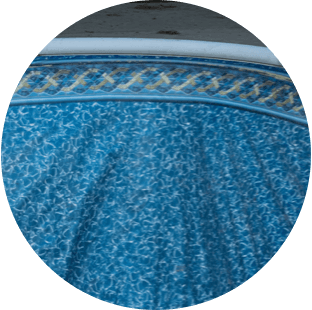 1. Cracks, Tears, or Wrinkles
1. Cracks, Tears, or Wrinkles
Your pool is a delicate ecosystem that requires proper balancing of water chemistry and pH. While a vinyl liner is meant to withstand harsh UV rays and chemically-treated pool water, cumulative wear and tear through the years is to be expected. In addition to fading, the one-two punch of UV rays and pool chemicals can cause your liner to degrade, developing small cracks and tears.
If you notice your pool’s water levels beginning to drop by more than an inch over the course of a week or two, this can be a sign that your liner has a leak. Depending on the size of the leak, it may be able to be patched. But a larger crack or tear may mean it’s time to replace your liner.
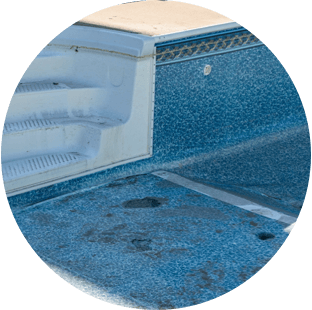 2. Stains and Discoloration
2. Stains and Discoloration
Over time, your once-brilliant liner may lose some of its vibrant hue due to constant exposure to sun, the elements and UV rays. It can also lose coloring as a result of chemical damage due to improper chemical use.
While it’s perfectly okay to want to replace your liner for cosmetic reasons to enhance the aesthetics of your pool, you may need to replace a stained or discolored liner because those imperfections indicate that your liner is becoming brittle with age. Older liners become more fragile and prone to tears and wrinkles, inching you closer to scheduling a liner replacement.
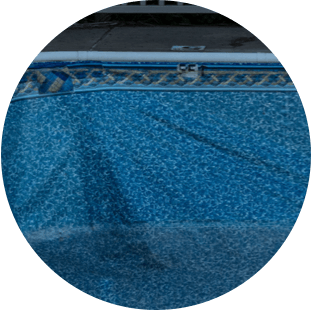 3. Stretching or Slipping
3. Stretching or Slipping
While some liners become more brittle with age, others become a little too elastic – stretching over time. While a little extra give is normal for an older liner, if you notice significant wrinkles in your liner or if it keeps slipping and sagging out of coping track, it’s likely time to replace your liner.
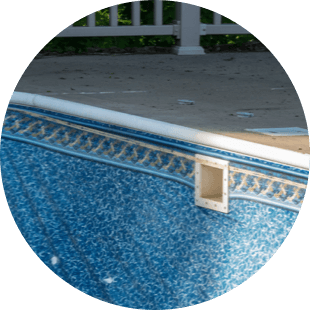
4. Falling out of the Bead
In some cases, your liner may be held in place by atrack and bead system. The track is a sort of
groove that extends around the top of your pool walls. The bead is attached to the edge of a vinyl liner itself and snaps into the track. Your liner has a series of beads that lock into this groove.
Over time, a liner bead can fall out of the track due to age, as well as water pressure and exposure to chemicals. Much like the liner itself can lose elasticity over time, a bead can become more brittle with age and won’t fit as securely in the track as it did before. Temperature fluctuations can also impact your liner becoming detached from the bead.
In some instances, you may be able to fix it yourself by pouring hot water onto the liner, making it more pliable to guide back into the track. This can be tricky as the liner will be hot, so you want to be careful not to accidentally burn yourself. Then, push the bead back into the track. If you are not confident about how to DIY a liner bead repair, it’s best to call in a professional. However, in many cases, your liner falling out of the bead or track is a clear sign that it’s time to replace your vinyl liner.
When is the Best Time to Replace a Pool Liner?
If the time has come to replace your liner, the best time of year to have it done is in the spring or fall. This way, you’re not cutting into prime pool time during the summer. If you’re also planning on remodeling your pool, this is also a good time to schedule a liner replacement alongside these bigger, more invasive changes that would require your liner to be replaced anyway.
Sometimes, unexpected leaks happen or you find out you have a sizable tear in your liner. This might merit an immediate fix. It’s often impossible to predict when your liner needs replacement, however, good pool maintenance and keeping an eye out for warning signs that your liner has reached the end of its lifetime can let you know it’s time for a new liner.
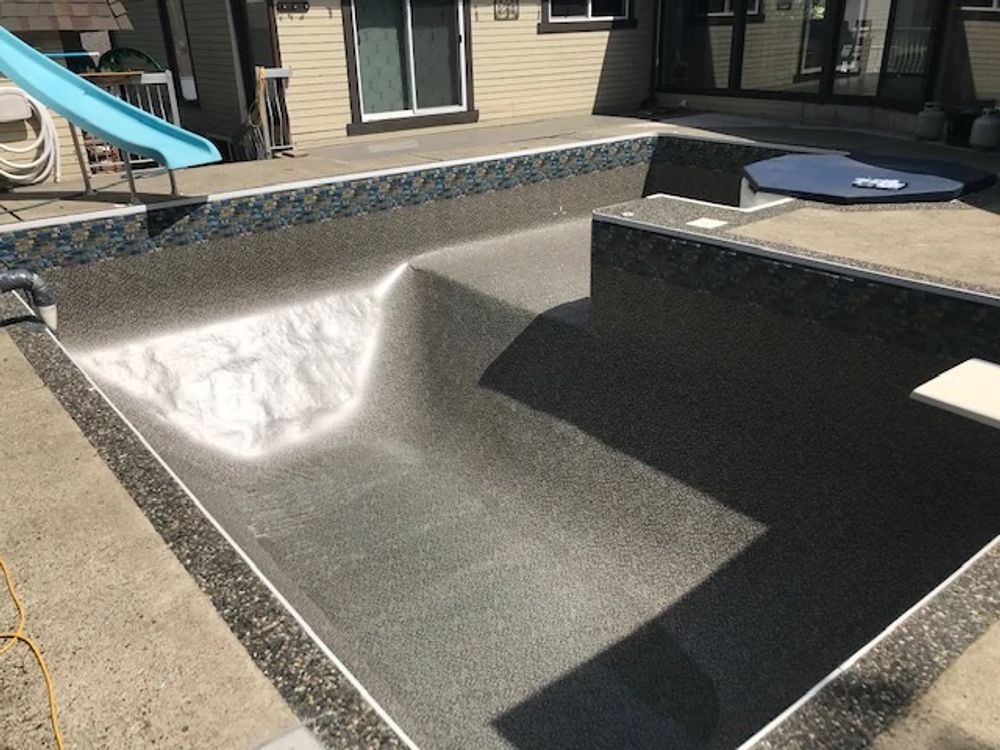
Factors that Impact a Pool Liner’s Lifespan
Frequency of Use
The more you use your pool and the more foot traffic your liner sees, the greater the odds are that it can develop a tear. Opting for a thicker liner and ensuring that only soft pool toys (foam pool noodles, beach balls, inflatables, etc.) can help reduce damage, prolonging your liner’s lifetime.
Fully Draining the Pool
Fully draining your pool is one of the biggest no-no’s of owning a vinyl liner pool, particularly if you have an inground pool. While your liner is sealed into place, the weight of the water in a filled pool also helps keep your liner secure. Draining all of the water from your pool can cause bubbles and wrinkles in your liner, making it more susceptible to tearing.
When pool season is over and it’s time to winterize your pool, never fully drain your pool. While you’ll want to reduce your pool’s water levels because frozen water can expand and cause damage, you should only lower your water levels to approximately 1” below the skimmer.
Unbalanced Chemicals
Your water chemistry also plays a role in your liner’s lifecycle. Unbalanced chemicals can cause your liner to wrinkle and sag prematurely. If your water’s pH and alkalinity levels are too low or too high, it can cause your liner to expand and wrinkle. The sweet spot for pH levels is between 7.4 and 7.6 to avoid liner wrinkles – and also ensure your pool water doesn’t irritate your skin!
But pH levels are just one part of the equation. Chlorine can stain or bleach your liner if not used properly. Pool and Spa News notes that “Chemicals, such as chlorine, can settle in the deep end of the pool and bleach the liner if they are not allowed to circulate for several hours.” To help keep your liner in good condition.” In fact, too high a concentration of any one additive to your pool water’s chemistry can throw off your water balance. Be sure to add only one thing at a time when balancing your pool water.
Improper Maintenance
If you own a vinyl liner pool, it’s important to stay on top of routine maintenance. Once per week, skim your pool and give your liner a gentle scrub with a soft-bristled brush to remove any stains and discourage algae growth. That small time investment each week can pay off in the long run, allowing you to get more life out of your liner. Not keeping up with maintenance can lead to stubborn stains and algae growth, which can throw off your water chemistry. The more chemicals you have to add and balance, the greater the risk of exposing your liner to undiluted chemicals and potentially shortening its lifespan.
If you have an automatic pool cover, be sure to open your autocover at some point during the day to reduce water temperatures. Among their many benefits, autocovers can help you save on energy costs and maintain steady temperatures. However, if your pool water stays too warm, it can create a more hospitable environment for algae growth, which can compromise your liner.
Caring For Your Vinyl Swimming Pool Liner
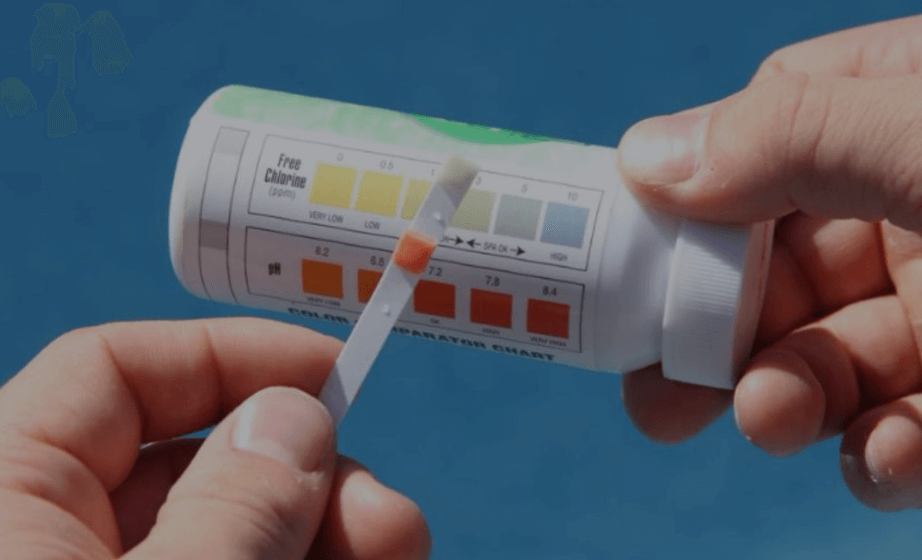
1. Keep Your Chemicals Balanced and Use the Proper Chemicals
The chemical test kit that came with your pool is a valuable ally. This is probably the single most important step in extending your liner’s life. Improper use of chemicals and chemical imbalance can zap the life out of your vinyl pool liner in a hurry.
Learn more about the basics of pool chemicals, testing and balancing.
2. Take Care of the Exposed Top Edge of the Vinyl Liner
The most vulnerable area of your liner is the top 6 to 8 inches above the water line. This area is regularly affected by such things as scale, body oils, lotions and airborne contaminants that will cause it to dry out. It’s a great idea to use an approved cleaner that you purchase from your local pool store to clean the exposed edge at least once or twice a month.
3. Avoid Activities that Would Damage Your Pool and Equipment
This may seem like a no brainer, but you’d be surprised at the things we in the pool industry see that ruin vinyl liner swimming pools each and every day. Pool vacuum poles are not meant to be used as pole vaults, and vinyl liner swimming pools should never double as hockey rinks in the winter. Be smart about what you use both in your pool area and what goes directly into your pool for fun and games. Make sure that sharp objects, including pet claws, stay far away from your vinyl liner.
Visit our maintenance section to learn more about taking care of your vinyl liner pool.
Show Your Liner Some Love and It Will Love You Back For Years to Come
Although a well-maintained vinyl pool liner can last between 8 and 12 years on average, a little extra TLC can help you get even more life out of your liner. When the time comes and you need to swap out an older liner for a fresh new one, Latham is here to help you with an inground vinyl pool liner replacement. With an assortment of colors and patterns, our liners are backed by industry-leading warranties, making us an easy choice for quality and style.
Contact an independent builder today.
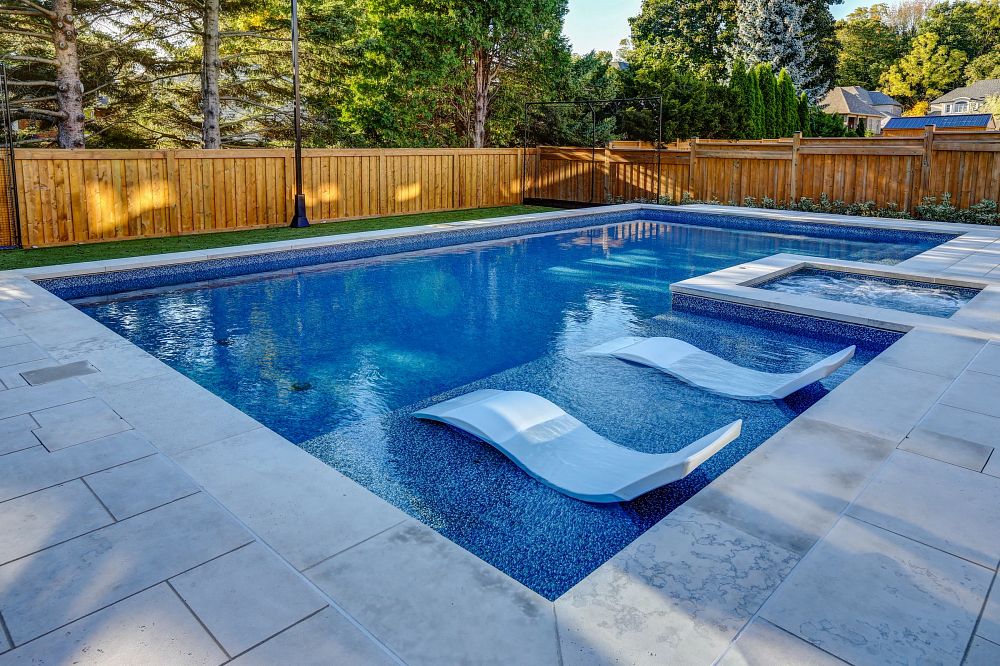

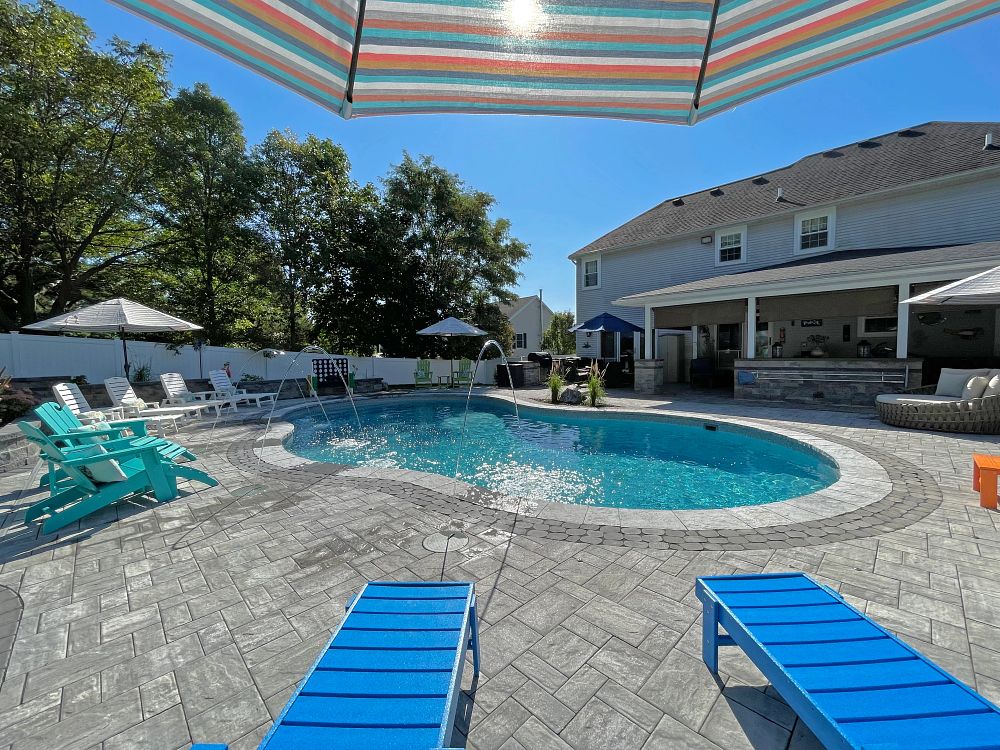


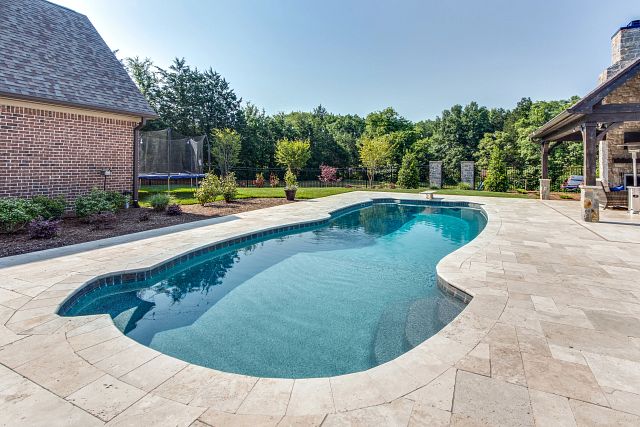
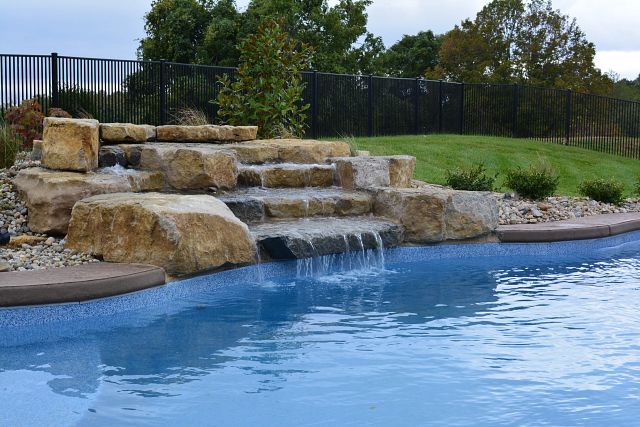
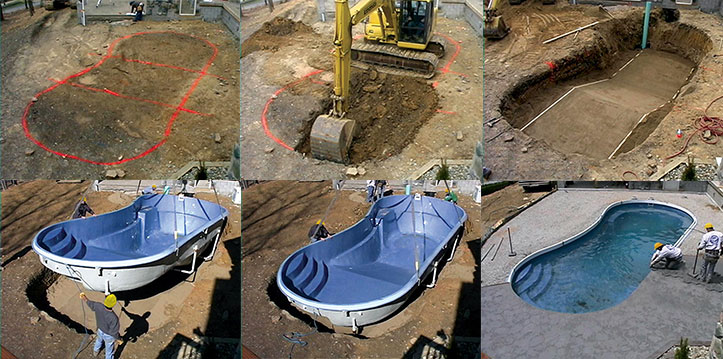
Join the discussion